The First Triptychs:
From three separate exposures
My first and best-known triptych, the Bolinas Ridge Triptych, was created from three separate film exposures, shot one after another, in order to display a more panoramic view than I was able to make in a single exposure. I chose my tripod location carefully so I would have inviting details in each of the three frames as well as a captivating scene overall from the three combined images. The individual frames must be pleasing to view in themselves, but the combination becomes something other–more than the summation of the parts.
I continued looking for three-part synergy in the landscape… for potential scenes that could be strung together in this manner. I added several more of these panoramic-style triptychs to my catalog during this early period of work. It was a while before it occurred to me that another kind of a triptych, the divided, single-image triptych could also be worthwhile to explore.
The First Split-Image Triptych
An art collector in New York contacted me. She wanted a more rectilinear triptych for a particular space. My panoramic triptychs were not going to work. I knew that I couldn’t create something on demand as the beauty of the light and the moment cannot be readily invoked in my kind of photography. I wondered if I had an existing single image, that could be divided nicely in three vertical slices–that would exhibit the hallmarks of a beautiful triptych, ie. each panel would contain fascinating compositional elements and when seen in total would become much more than the three parts.
I began the process of dividing candidate images into three parts until I found one we both liked. The single image known as Tomales Bay and Black Mountain became the Olema Hill Triptych. It’s named after the hill I stood on when making the original exposure. I noticed that when the image was divided, my eye (and presumably yours) is drawn to the individual features of the overall composition. We simply pay more attention to them. Notice the Inverness Ridge and Tomales Bay in the left panel, a foreground bush and rolling clouds in the middle, and the lovely folds of Black Mountain in the right section. Take a moment to look– first at the single image and then the triptych to see how this works.
After creating this initial split-image triptych, I began searching my files for other single images to divide. I discovered that Tamalpais Ridges & Fog works wonderfully and the triptych derived from it has become widely collected. Examples follow:
It turns out that the best examples of the divided image triptych tend to come from my most collected single images. It’s as though the seeds of harmonious division lie dormant in some of the strongest individual compositions. The split-image triptych also lends itself well to larger framed artwork presentations.
A few more examples, including a brand new triptych of my finest seascape at McClures Beach, are posted below for your comparison and enjoyment. The single image from which the triptych is derived is followed by its split-image version.

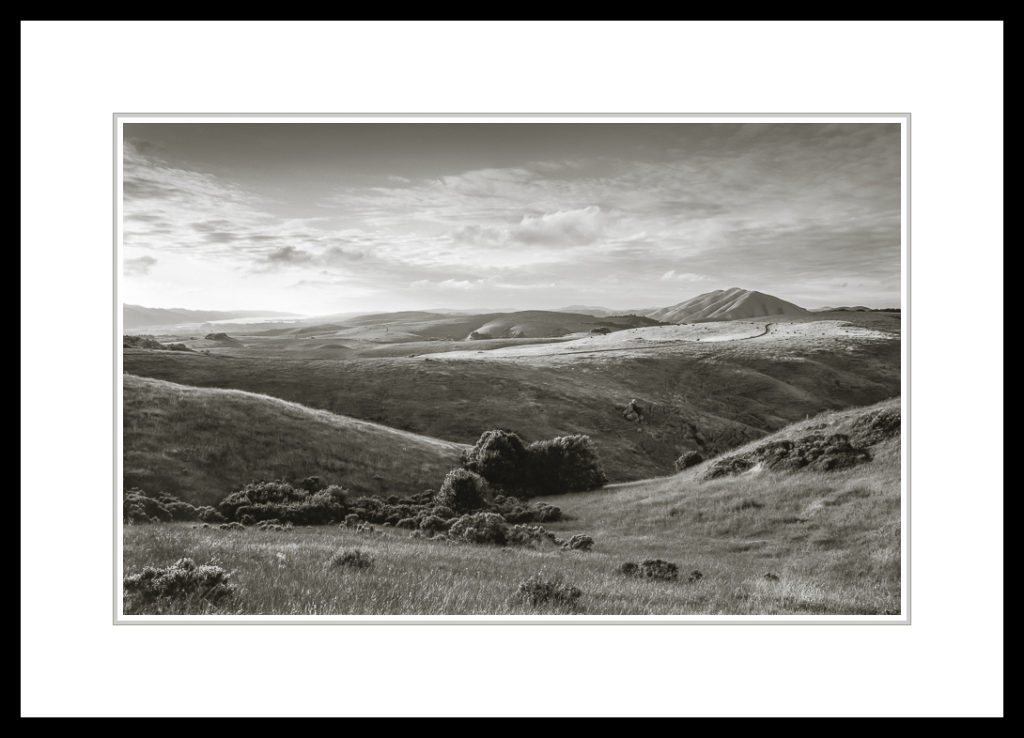
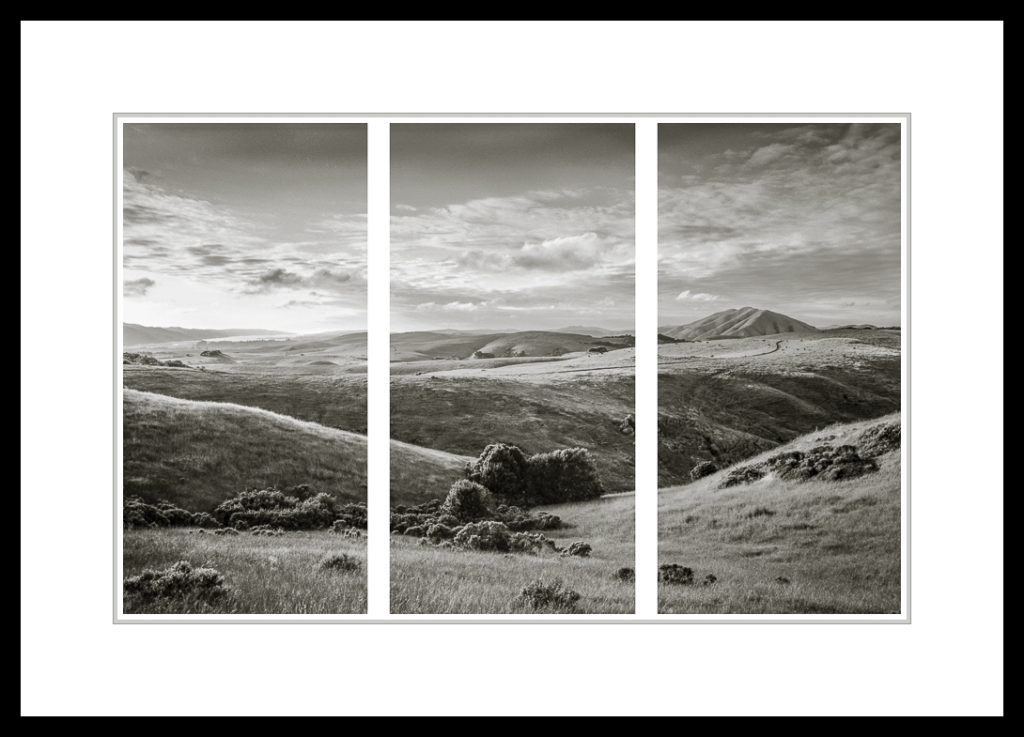
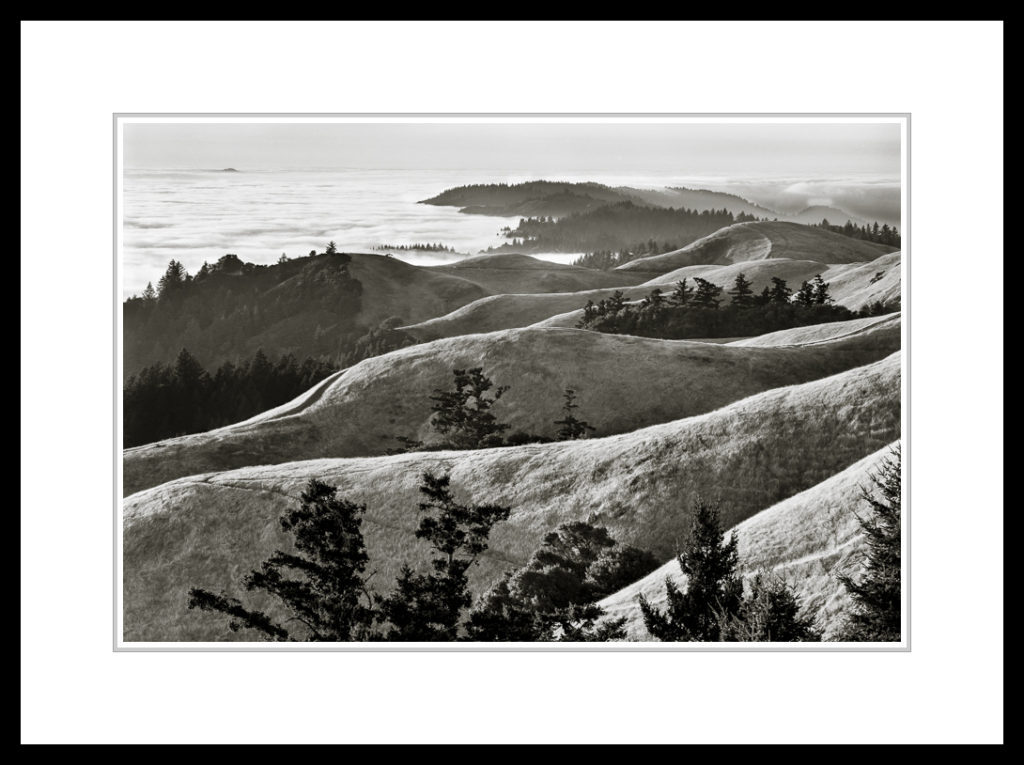
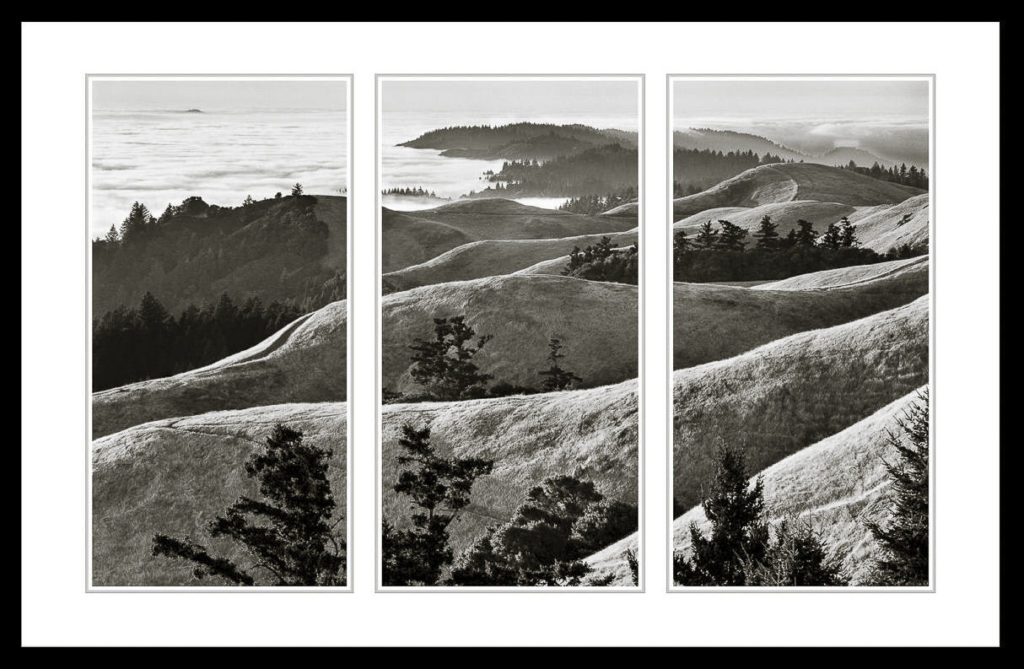

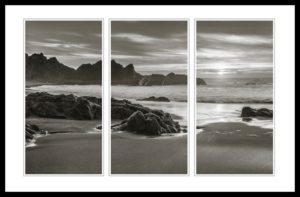
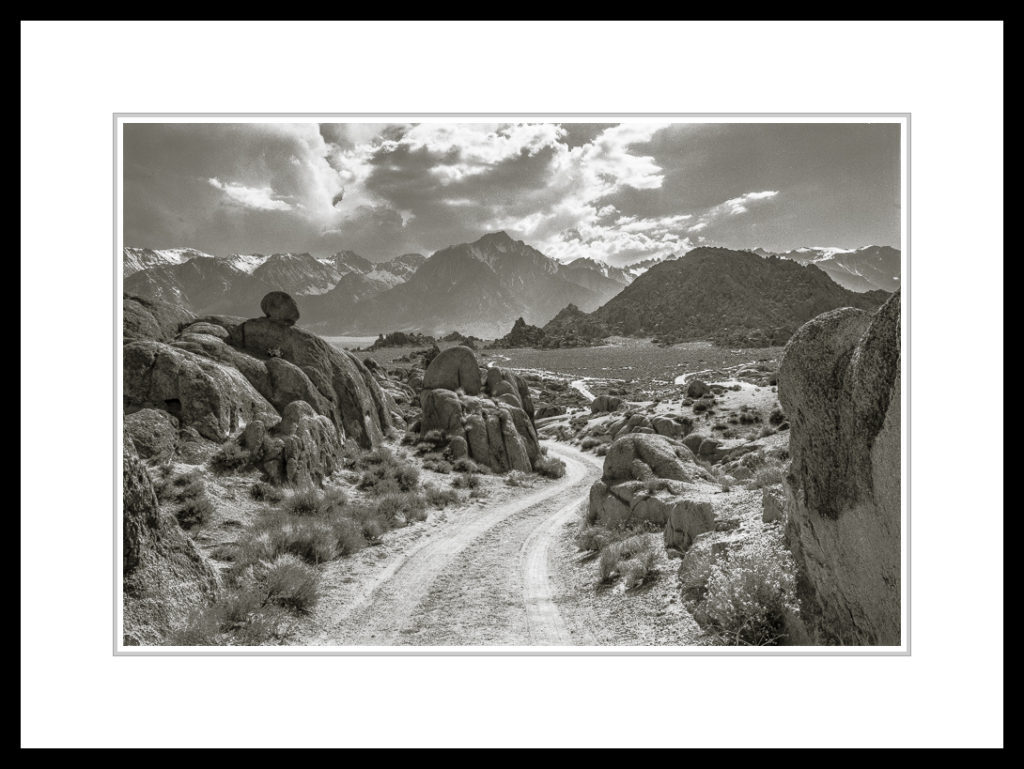
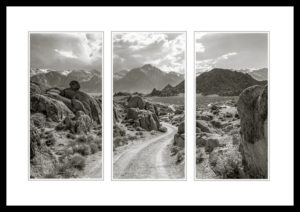
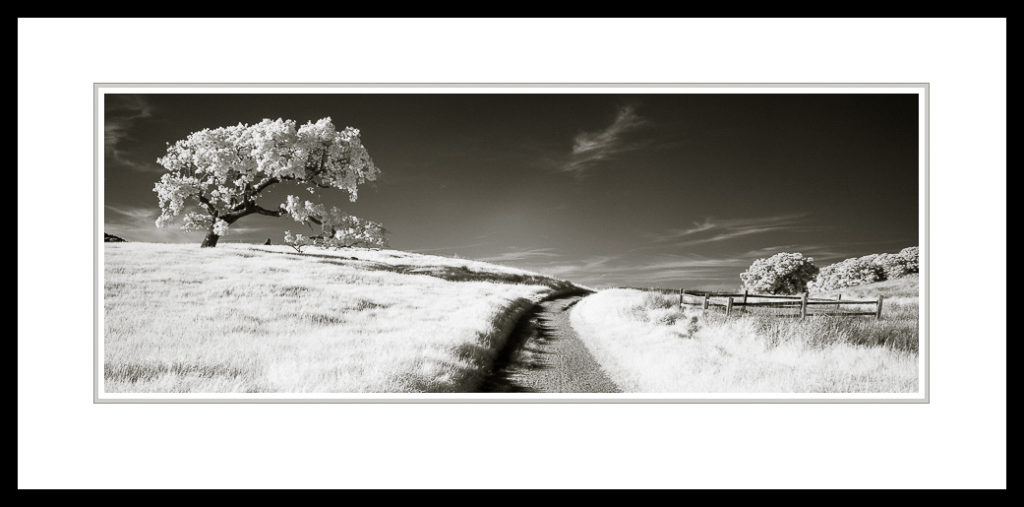
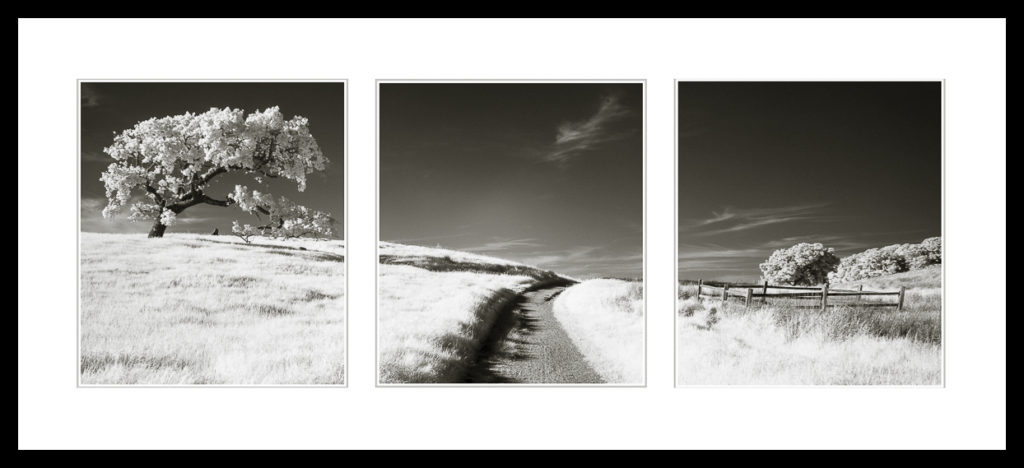
I love these how big is the Bolinas ridge photo and how much is it?
I’m responding to your question about sizes and prices of Bolinas Ridge triptych:
Online there are two sizes available for shipping and will call: A 4 ft. and a 5 ft. wide framed version for $2200 and $2700 respectively. Other sizes, much larger are available by quotation.
Go to Bolinas Ridge Triptych to order and or see sizes and prices in popup menu below the image.